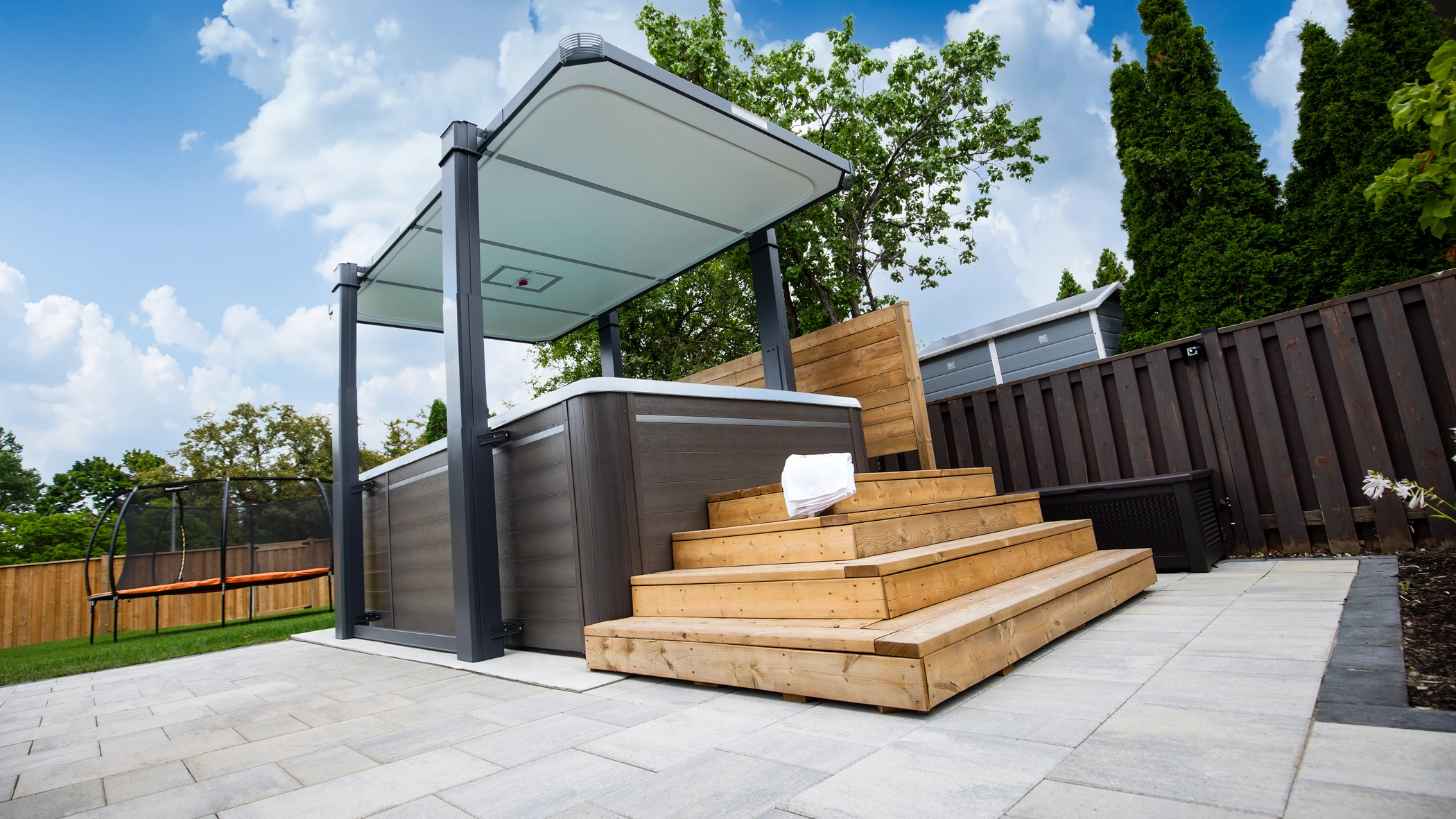How to Add Chemicals to a Swim Spa in the Right Order

Properly balancing the chemicals in your swim spa is crucial for maintaining clean, safe water. At Hydropool, we understand that keeping your swim spa in perfect working condition can seem like a complicated task. However, following the correct procedure for adding chemicals is simple and can save you time and money on maintenance.
If you’re unsure about how to add chemicals, it’s essential to know that doing it in the wrong order can cause imbalances, ineffective sanitization, or even damage to your swim spa equipment. Here’s a quick guide to help you keep your water balanced and your swim spa running smoothly.
In this blog, we will cover:
- The importance of water balance: Why maintaining the right chemical balance is key to swim spa health
- How to add chemicals: Step-by-step instructions for the proper order of chemical addition
- Common chemical mistakes: What to avoid when managing your swim spa water
Let’s dive in and ensure your swim spa stays in top shape!
The Importance of Water Balance in Your Swim Spa
Before adding any chemicals, it’s essential to understand why balancing your swim spa water matters. Properly balanced water ensures that:
- Your water is safe: Maintaining the correct pH, alkalinity, and sanitizer levels prevents bacteria growth, skin irritation, and cloudy water.
- Your equipment lasts longer: Imbalanced water can damage your swim spa’s pumps, jets, and filters, leading to costly repairs.
- Your chemicals work effectively: Adding chemicals in the wrong order can prevent them from mixing properly, rendering them ineffective.
Balancing your swim spa water is an ongoing task, but with the right routine, it will become second nature. Now, let’s move on to the right order for adding chemicals.
How to Add Chemicals to a Swim Spa in the Right Order
Adding chemicals to your swim spa in the correct order is crucial to achieving optimal water balance. Follow this step-by-step process for the best results:
1. Test the Water
Before adding any chemicals, always test your swim spa water. You can use test strips or a liquid test kit to measure key parameters like pH, alkalinity, and sanitizer levels. Testing regularly ensures that you only add the chemicals that your water needs.
2. Adjust pH Levels First
pH is one of the most critical factors when it comes to water balance. Ideally, the pH level of your swim spa water should be between 7.4 and 7.6 (or 7.2–7.6 for Canadian readings). If the pH is too low (acidic), you’ll need a pH increaser (soda ash). If it’s too high (alkaline), use a pH reducer (muriatic acid or sodium bisulfate).
Adding the pH adjusters first ensures that your sanitizers will work correctly and prevent scaling or corrosion in your system.
3. Balance Alkalinity Next
Total alkalinity (TA) helps stabilize the pH in your water. Aim for an alkalinity level between 80–120 ppm (parts per million) (or 70–120 ppm in Canada). If the alkalinity is too low, the pH can fluctuate, causing imbalances. If it’s too high, you’ll have difficulty adjusting the pH.
To raise alkalinity, use an alkalinity increaser (sodium bicarbonate). If it's too high, use an alkalinity reducer (muriatic acid).
4. Add Sanitizers (Chlorine, Bromine, or Salt)
After balancing pH and alkalinity, it’s time to add your sanitizer, which helps kill bacteria and maintain clean water. You can use chlorine, bromine, or a salt system depending on your swim spa's setup.
- Chlorine: Typically added in granular or tablet form, chlorine should maintain a level of 1–3 ppm.
- Bromine: Often used in tablet form, bromine should maintain a level of 3–5 ppm.
- Salt systems: If your swim spa uses a saltwater system, the salt level should be within the recommended range, usually between 2000–4000 ppm.
Sanitizers should always be added after pH and alkalinity adjustments to ensure they work at their best.
5. Shock Treatment (Optional)
Once your primary chemicals are balanced, you can perform a shock treatment to give your swim spa water an extra clean boost. Shocking involves adding a higher dose of chlorine or non-chlorine shock to break down organic waste, oils, and contaminants that accumulate over time.
Shocking should be done after adding the primary chemicals and can be done weekly or as needed based on your swim spa usage.
6. Wait and Retest the Water
After adding all your chemicals, wait for at least 30 minutes to 1 hour before using your swim spa. This gives the chemicals time to circulate and mix properly. After waiting, retest the water to ensure everything is balanced correctly. If necessary, adjust the chemicals again.
Common Chemical Mistakes to Avoid
While maintaining your swim spa’s water chemistry, here are a few common mistakes to watch out for:
- Adding chemicals in the wrong order: Always follow the order of testing, pH, alkalinity, sanitizer, and shock treatment for optimal results.
- Overdosing on chemicals: More chemicals don’t always mean better water. Stick to the recommended doses to avoid damaging your swim spa or causing skin irritation.
- Not waiting long enough between treatments: Giving your chemicals time to mix is essential. Always wait at least 30 minutes after adding chemicals before retesting or using the swim spa.
How to Add Chemicals to a Swim Spa in the Right Order
Maintaining your swim spa water doesn’t have to be overwhelming. By following the proper order for adding chemicals, you’ll keep your water balanced, your spa equipment in top condition, and your bathing experience enjoyable.
Still have questions or want more information about managing your swim spa? Visit our Swim Spa Catalog for more details, or head over to our Learning Centre for expert tips and resources.
If you need personalized advice, reach out to your local Hydropool retailer here: Find a Retailer.






